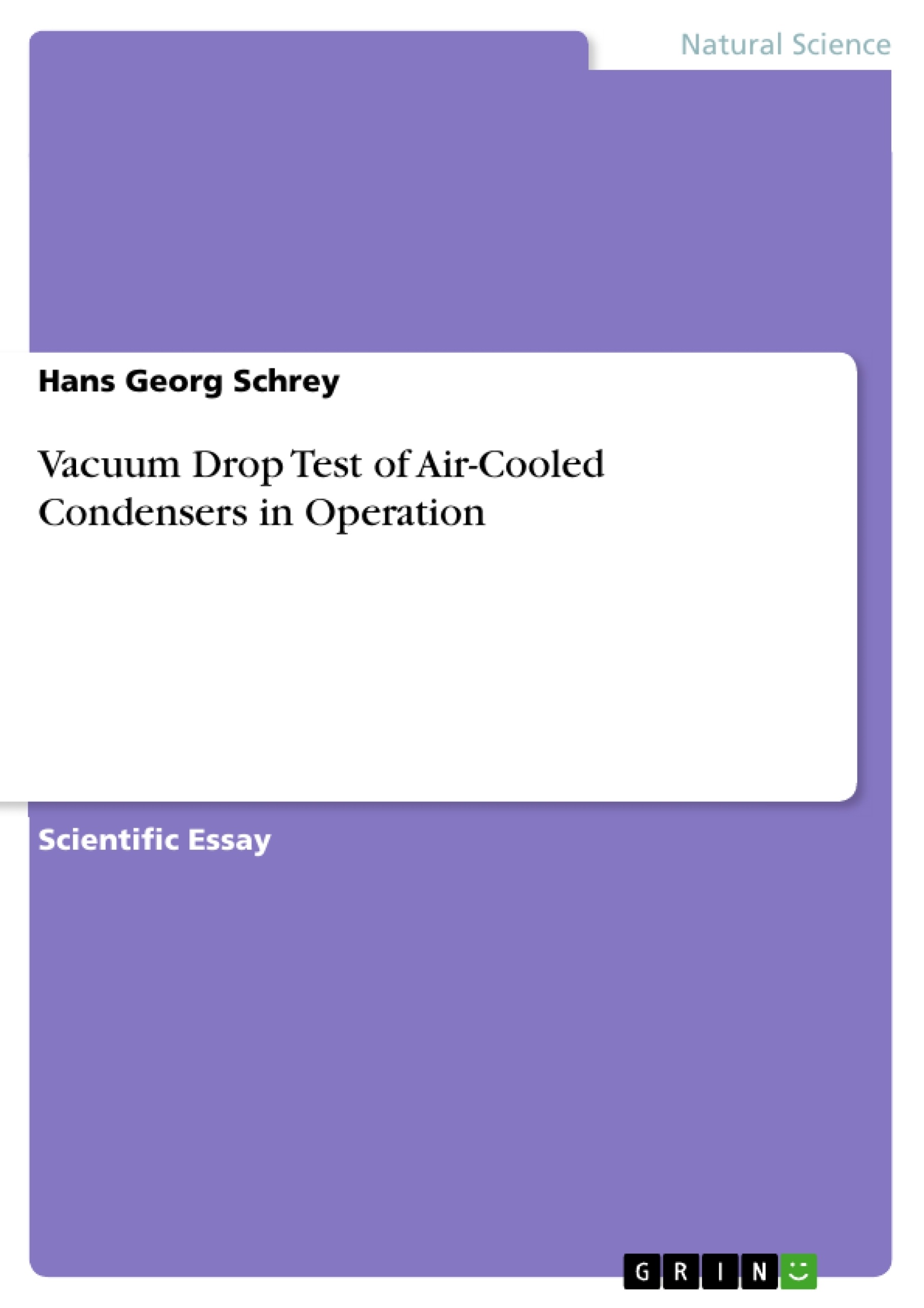Vacuum tightness is critical for air-cooled condensers operating at low absolute pressure. Low vacuum is aimed for because vacuum dominates the power plant efficiency. To verify vacuum tightness usually a vacuum drop test is made with the system empty at normal atmospheric temperature and free of any liquids. This test is done before commissioning of the power unit and generally follows the recommendations of the Heat Exchanger Institute (HEI) as outlined in §6.1.1 of “Standards for Steam Jet Vacuum Systems”.
However, over time of operation the power plant may develop leakages, which were not present at the time of the original drop test. This calls for a tightness test at operating conditions where pre-conditions for the standard vacuum drop test are not fulfilled. The report describes a vacuum drop test without interfering too much into normal power plant operation. The test is suitable for stationary operating conditions using standard operation readings.
The assessment of leakage flow is based on the measured vacuum decay rate. It is shown that vacuum decay rates taken from tests before and after commissioning are different. Contractual fixing of acceptable vacuum decay rates should therefore be treated with care. Example graphs for easy evaluation are given.
Inhaltsverzeichnis (Table of Contents)
- Introduction
- Standard Vacuum Drop Test
- Leakage Test with ACC in Operation
- Inert Gas Accumulation in ACC during Operation
- Loss of Condensing Capacity Caused by Surface Blanketing
- Effective Pressure Effect
- Comparison of Static and Steady State Results
- Conclusion
Zielsetzung und Themenschwerpunkte (Objectives and Key Themes)
This report aims to describe a vacuum drop test method for air-cooled condensers (ACCs) that can be performed while the system is in operation. This method provides an alternative to the standard vacuum drop test, which requires the system to be shut down. This test is crucial for identifying leakages that develop over time, which are not detected during the initial commissioning phase.
- Vacuum tightness in air-cooled condensers operating at low absolute pressure
- Verification of vacuum tightness through vacuum drop tests
- Assessment of leakages in ACCs operating under normal conditions
- Comparison of vacuum decay rates measured before and after commissioning
- Development of a practical test method for ACCs in operation
Zusammenfassung der Kapitel (Chapter Summaries)
- Introduction: This chapter provides an overview of the importance of vacuum tightness in air-cooled condenser systems and the standard vacuum drop test procedures. It introduces the challenges associated with performing vacuum drop tests on ACCs in operation.
- Standard Vacuum Drop Test: This chapter outlines the standard vacuum drop test procedure as defined by the Heat Exchanger Institute (HEI). It explains the principles behind the test and the derivation of the leakage rate formula based on the vacuum decay rate.
- Leakage Test with ACC in Operation: This chapter presents a detailed description of the vacuum drop test method developed for ACCs in operation. It discusses the factors that influence the vacuum decay rate during operation, including inert gas accumulation, surface blanketing, and effective pressure effects.
- Comparison of Static and Steady State Results: This chapter compares the results obtained from static vacuum drop tests (with ACC out of operation) and the steady-state tests (with ACC in operation). It highlights the differences in vacuum decay rates observed under different conditions.
Schlüsselwörter (Keywords)
This report focuses on the vacuum tightness of air-cooled condensers and the development of a practical vacuum drop test method for systems in operation. Key terms include air-cooled condenser (ACC), vacuum decay, leakages, HEI standards, VGB-R126L, and VGB-R131.
- Quote paper
- Dipl.-Ing. Hans Georg Schrey (Author), 2018, Vacuum Drop Test of Air-Cooled Condensers in Operation, Munich, GRIN Verlag, https://www.hausarbeiten.de/document/421324



